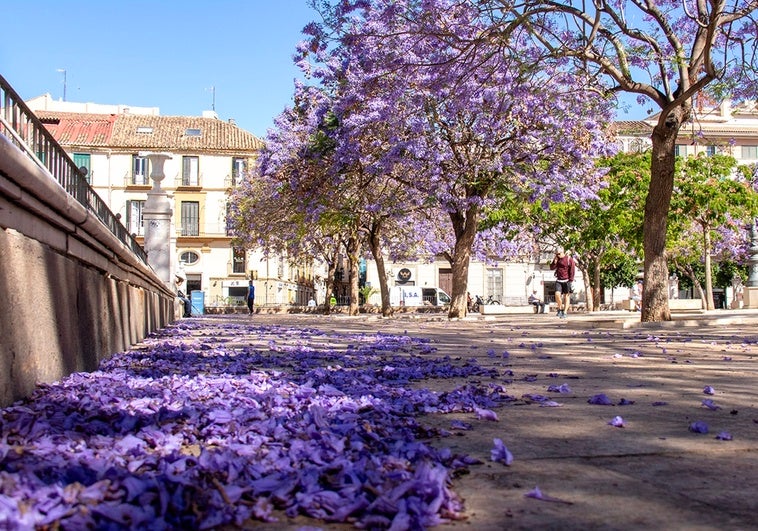
Sections
Highlight
Sections
Highlight

This plant is the real protagonist during the month of May and the first fortnight of June. Although it is common for this species to start flowering in April, the temperatures, drought and subsequent rains of the last few weeks have led to an untimely flowering. The jacaranda tree begins to sprout and spread its flowers all over the urban landscape, leaving postcard-worthy images. But not everything is rosy (or violet, in this case), because the tree has its virtues beyond beauty, but also brings with it some problems.
We have made a list of the pros and cons of having this kind of plant scattered across the city, so you can make an informed choice about whether to declare yourself a true fan or whether you like it, but prefer it in the parks than on your doorstep.
The picture is beautiful, yes, but have you taken a closer look? The flowers that fall end up drying out as the days go by, and their image completely changes: the lilac gives way to a dull, blackish colour. The dried the ones mix with those that have been stepped on by passers-by, completely transforming their original appearance.
But this is the least of it. The biggest issue is the dirt they generate. When in season, jacarandas shed a multitude of leaves, flowers and all kinds of traces from their branches and foliage, staining pavements, street furniture and vehicles parked in the shade.
The fallen flowers are then attacked by aphids, which release a kind of sticky sap that becomes embedded in the bodywork and windows of cars, pavement slabs, bins, among others. This happens to such an extent that during flowering season, the municipal cleaning company Limasam sends out a team of twelve high pressure street washing units to keep the neighbourhoods clean. The town hall says that they are aware of the inconvenience that this tree species causes for citizens, which is why they have not been planted in public since 2015.

But it is not all bad - this imported species (because although the jacaranda abounds in Malaga, it is not native to it; it originates in Brazil) also offers a series of advantages. The jacaranda is one of the most CO2 absorbing species of tree and therefore really cleans the city air.
In fact, each of the 6,500 jacaranda trees planted in Malaga can absorb up to one tonne of carbon dioxide per year. Consequently, this means the removal of up to 6,500 tonnes of CO2 in our atmosphere, which considerably improves the quality of the air that enters our lungs.
According to the study 'Natural CO2 sinks' by the University of Seville, a 100-metre-long avenue with ten jacarandas would absorb the gases emitted by 1,400 cars, on average.
And finally, let's remind ourselves of those postcard images. Plaza de La Merced, the Jardín de los Monos, Plaza de Capuchinos and many other corners of Malaga offer an image tinged with purple, worthy of being photographed and kept in our memory.
Publicidad
Publicidad
Publicidad
Publicidad
Esta funcionalidad es exclusiva para registrados.
Reporta un error en esta noticia

Debido a un error no hemos podido dar de alta tu suscripción.
Por favor, ponte en contacto con Atención al Cliente.

¡Bienvenido a SURINENGLISH!

Tu suscripción con Google se ha realizado correctamente, pero ya tenías otra suscripción activa en SURINENGLISH.
Déjanos tus datos y nos pondremos en contacto contigo para analizar tu caso

¡Tu suscripción con Google se ha realizado correctamente!
La compra se ha asociado al siguiente email
Comentar es una ventaja exclusiva para registrados
¿Ya eres registrado?
Inicia sesiónNecesitas ser suscriptor para poder votar.